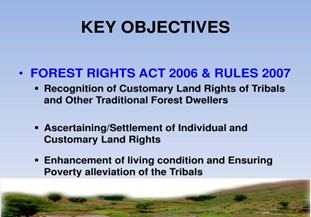India’s FRA: A People-Centric Conservation Model
India’s FRA: A People-Centric Conservation Model
Why in the News ?
India’s Forest Rights Act (FRA) stands out globally as a community-led conservation framework, in contrast to the exclusionary global trend of creating protected areas. It ensures tenure security and biodiversity preservation through decentralised governance, led by indigenous and local communities (IPLCs).
About the Global Conservation vs. Community Rights:
- Many global conservation laws follow a fortress model, criminalising indigenous people and displacing 10–20 million
- Protected areas separate IPLCs from their lands, livelihoods, and cultures.
- IPLCs like the Masai, Ogiek, Batwa, and Adivasis have historically safeguarded biodiversity.
- Such exclusionary laws ignore traditional knowledge and community governance
India’s Legal Approach to Biodiversity:
- India, a megadiverse nation and CBD signatory, enacted the Biological Diversity Act (2002) and Forest Rights Act (2006).
- The FRA empowers gram sabhas to manage forests and recognise 13 types of community rights.
- FRA addresses historical injustice and integrates tenure security with conservation.
- In contrast, the Wildlife Protection Act, 1972 led to 6 lakh displacements through state-controlled reserves.
Way Forward and Policy Challenges
- The 30×30 target under the Kunming-Montreal Global Biodiversity Framework (KMGBF) could threaten IPLC rights by expanding protected areas.
- India’s new National Biodiversity Strategy and Action Plan (NBSAP) emphasises bottom-up governance but still favours state-led mechanisms.
- OECMs offer hope for inclusive conservation but need safeguards.
-
The Ministry of Tribal Affairs urges integration of FRA with BDA, ensuring gram sabha consent and legal clarity.
Forest Rights Act (FRA), 2006: A Landmark LegislationBackground: ● Aimed to correct historical injustices faced by Scheduled Tribes (STs) and Other Traditional Forest Dwellers (OTFDs). ● Earlier forest laws labelled them as encroachers on ancestral lands. Key Provisions: ● Individual & Community Rights over forest land for habitation and livelihood. ● Community Forest Resources (CFR): Legal rights to manage customary forests. ● Sustainable Use: Encourages NTFP harvesting (e.g., honey, bamboo). ● Critical Wildlife Habitats: Balances conservation with rights. ● CFR Rights under Section 3(1)(i): ○ Gram Sabhas empowered for governance. ○ Protects from eviction without consent. ○ Recognises traditional knowledge and customary practices. |




